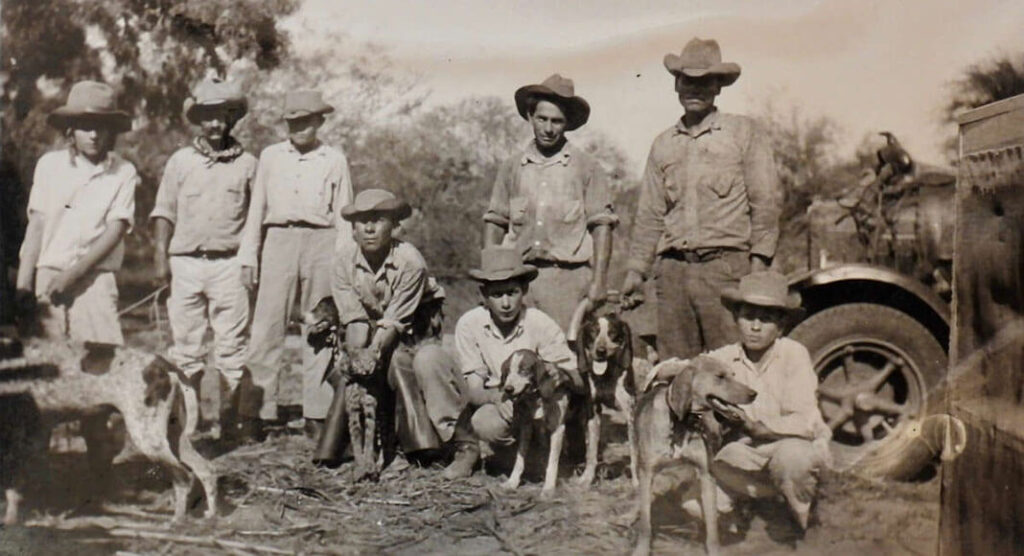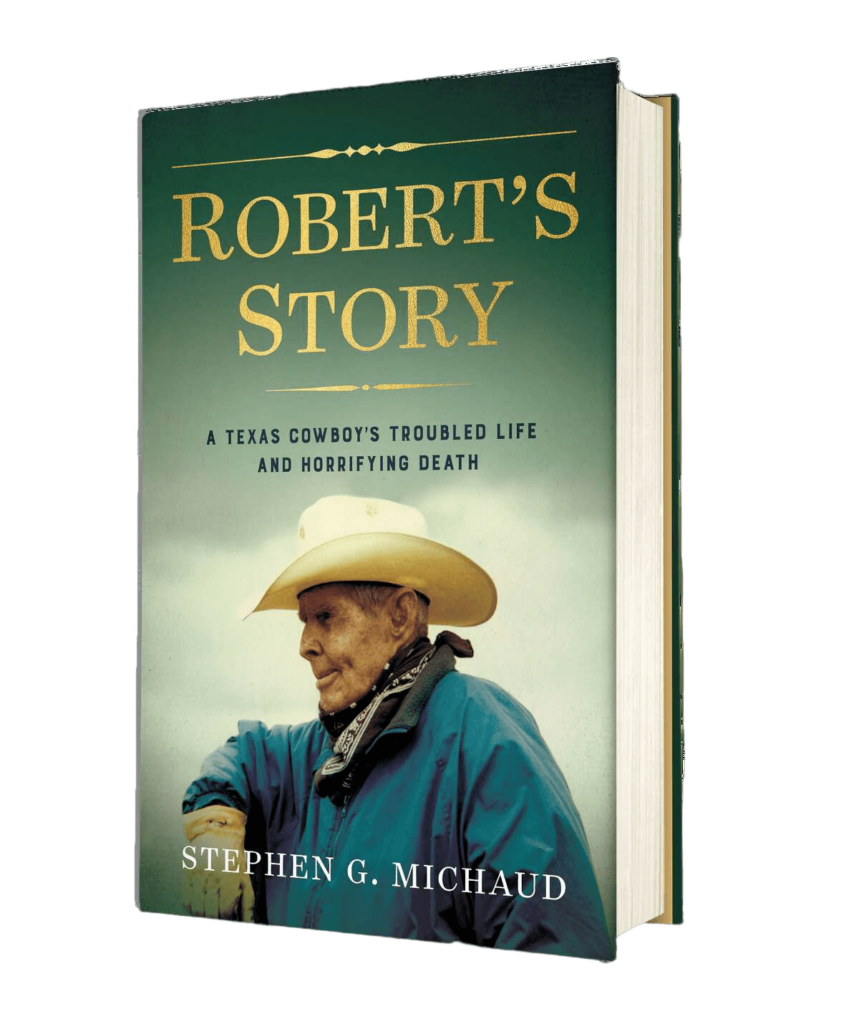Shocking photo a testament to the devastating consequences of elder abuse.
June is Elder Abuse Awareness Month.

This photo captures the heart-wrenching image of Robert East, once a robust and successful Texas cowboy, reduced to a mere shadow of his former self. Bedridden and frail, his once strong and rugged frame became emaciated and weak. The despair in his eyes told a story of neglect and unimaginable suffering, as he was subjected to elder abuse by those entrusted with his care.
Elder abuse is a horrifying and illegal act that preys on the vulnerability of older individuals. It can take various forms, including physical, emotional, sexual, financial, or even neglect. In Robert East’s case, he had amassed considerable wealth from his thriving cattle ranch that spanned thousands of acres, which also later produced a massive amount of oil and gas. At the height of his success, he was receiving an astounding twelve million dollars a month. However, his life took a tragic turn when he fell victim to elder abuse.
The once self-sufficient multimillionaire was left without proper medical attention and care, which led to his slow and agonizing decline. The shocking photo of Robert’s suffering is a testament to the devastating consequences of such abuse.
Stephen G. Michaud’s book, Robert’s Story: A Texas Cowboy’s Troubled Life and Horrifying Death, delves into the harrowing tale of Robert East’s life and his tragic end. The photo, which also appears in the book, serves as a stark reminder of the darker side of humanity and the importance of protecting our elderly from such abuse. Texas Tech law professor Gerry W. Beyer commented in his review of the book stated, “Stephen Michaud, does an excellent job of sifting through the many years of Robert’s personal life and hurt, Robert’s back stabbing betrayal by those he trusted, and the offensive overreaching legal system, all backed by evidence, to take the reader on a journey of disbelief, heartache, and the knowledge that it could happen to anyone of us.”
Elder abuse is not only morally reprehensible but also illegal. Perpetrators can face severe penalties, including imprisonment and fines, as well as civil liability. As a society, we must be vigilant in our efforts to identify, report, and prevent elder abuse, ensuring that vulnerable seniors like Robert East are protected from such heinous acts.
Photo caption by Roberto Hugo Gonzalez
Review: ‘Robert’s Story’ recounts larger-than-life tale of South Texas ranching family
William Jack Sibley, Contributor
There is still a part of Texas that no one has fully captured in print or other media: the concealed, sprawling, untidy, vibrant locale that is deep South Texas, from San Antonio to Brownsville — a land as enigmatic and arcane as ancient Egypt or Paleolithic cave etchings. From O’Henry to J. Frank Dobie to Americo Paredes to Gloria Anzaldúa, many are called to decipher but few approach defining its full efficacy.
It’s simply too big, too harsh, too grand, too wild, too dire — too unbelievable. A land of America’s biggest ranches — feudal estates of landed gentry and impoverished laborers, regional empires and peerless vaquero/cowboys of extraordinary skill and boldness. A terrain of intense heat and drought, as well as lush citrus orchards, vast cotton, watermelon, onion, cantaloupe and sugar cane fields. A land of Protestant Anglos living side by side with Catholic Latinos, generation after generation, until slowly, inevitably the ancient taboos melt into intermarriage, roles reverse and adaptation follows. Poverty and fantastic wealth, bias and growth; cruelty, faith, endurance and ultimately, a resolution of sorts.

Photo courtesy of the East Family
Stephen Michaud’s “Robert’s Story: A Texas Cowboy’s Troubled Life and Horrifying Death” (Coyote Publishing, $29.95) recounts the sad, dramatic and very Texas tale of Robert East, and of an era and populace now mostly vanished — as hazy a perception as the ocelots and cougars that once wandered the land freely.
Growing up in a ranching family in South Texas, I knew many of the players in this expansive book. From Bruno Goldapp, director of the Alice National Bank, to Bob Kleberg Jr., president of the 825,000-acre King Ranch, to his daughter, San Antonio doyenne Helenita Groves, and ranch attorney Gilbert Denman — I knew them all.
I attended Kleberg’s funeral at the King Ranch with my grandfather, Jeff Martin. My uncle John Martin bought the first Santa Gertrudis bull offered for sale from the King Ranch. My father for a time was a veterinarian for the King Ranch. Both my grandfather and uncle Tom Martin were early proponents of the original American breed of cattle, the Santa Gertrudis. I’ve sat with the East, Armstrong, Clements and Kleberg families at many a bull sale at the King Ranch. It’s an expansive assortment of aunts, uncles, siblings, cousins, stepparents, fiancés and the requisite hangers-on. Just like any family — only writ large.

Stephen G. Michaud / robertstory.net
My father, Dr. H.Q. Sibley, former director of the Texas Animal Health Commission and director of USDA Animal Inspection in Laredo, was a friend of all the East family heirs and descendants. In his estimation they, and especially Robert, were the embodiment of “old school” cowboying and hardscrabble doggedness. Nothing came easy. All was fraught with possible (and likely) misunderstandings, deception, recurring pestilence, weather calamities and, reigning above all, a fierce determination to succeed and dominate the land.
A half-million-acre ranch simply does not happen because someone dreamed it up one day. It takes determination. Lots of determination.
I’m also descended from a long line of eccentrics. We are known to even occasionally revel in our individual idiosyncrasies.
The East family was a veritable banquet of highly singular individuals. Mother Alice Gertrudis Kleberg East (known as “Old Mama”), the last surviving grandchild of King Ranch Empresario Captain King, lived to be 103 years old. She could be tough as a rusty spur or accommodating as a velvet settee, dependent upon individual circumstance. Her husband, Tom East Sr., renowned for always wearing a fedora and silk tie whether working cattle or in his office, died at the age of 53 from heart failure.
His oldest son, Tom Jr., became the next-in-line ranch patron — a succession not always held in high esteem by his younger, irascible brother Robert. Sister Alice Hattie East, known as “Lica,” never married and lived in her girlhood room at the ranch headquarters. Hunting, raising orphaned wildlife and breeding farm animals appeared to be her passion.
Brother Robert, an eternal bachelor, resided in an adjoining room in the big house. Robert did marry once but it didn’t take. He insisted his wife live with him in the family home in his boyhood room. She thought otherwise.
Tom Jr. died from heart failure at the age of 67, and Robert became the new jefe, though he was unqualified and woefully ignorant of the actual business sense required to run a ranch.
As related by Dr. Charles Gaitz, professor of psychiatry at the Baylor College of Medicine, who was called to expound upon Robert’s mental propensity during one of the myriad ranch ownership trials that ensued: “Mr. East has led a frugal life, with few or no indulgences. He has little interest in friendship, hobbies or socializing … little interest in philanthropy, world affairs or social problems. He’s relieved himself of responsibility, beyond working on the ranches, by relying on authority figures, e.g., his sister, attorneys and accountants.”
The old Bible quote and famous Rockefeller maxim, “To whom much has been given, much is required,” seems to have never been uttered in Robert East’s proximity.
After Humble/Exxon-Mobil discovered what at the time was the “U.S.’s most productive gas well” on the ranch and made Robert a mega-millionaire many times over, he practiced a miser’s approach in doing everything on the cheap.
“Appearances meant little to Robert,” Michaud writes. “Many of his ranch improvements, including buildings and fences, gates, roadways, water lots, traps and other installations were poorly maintained, if at all … vehicles were mostly old and battered from years of hard use … ranches were littered with snarls of rusted wire and pipe … marking yet another project in which Robert had lost interest before it was finished.”
Robert Claude East was a man-child whose natural affinity for animals, the land and pretty girls was no match for the shark lawyers, inter-family squabbling and hands-out ne’er-do-wells surrounding him that soon enough depleted his mind, body and spirit. The end of Robert’s life was as lonely and grim as any Biblical account of redemption denied. Partly because of his own obstinacy and partly due to the ravenous wolves that descended in greedy packs, his ending was a cautionary tale of ego, covetousness and “pride goeth before a fall.”
Michaud has written a work immense in research and interview disclosure. Highly comprehensive. The interspersed short side tales of sadness, humor and insight into the East family psyche make them all the more accessible and human.
Despite the inherent quirks, peccadillos, cussedness and flat-out ego, this is ultimately the story of family. A family that fought and made up — and fought again — as families do. Unimaginable amounts of land and money were at stake, and one man, Robert East, became potentate of a post he little grasped and ultimately blundered. Michaud has unveiled the epic story of worlds colliding under the illuminating magnifying glass of yet another larger-than-life Texas saga.
Full disclosure: Although I’ve never met Stephen Michaud, we are both inductees of the Texas Institute of Letters, which was “founded in 1936 to celebrate Texas literature and to recognize distinctive literary achievement.”
William Jack Sibley is a novelist, playwright, screenwriter, journalist, and author of the award-winning novel, “Here We Go Loop de Loop.”
Credits:
We have obtained permission to republish this content. We extend our gratitude to Coyote Publishing for generously allowing us to feature their exceptional book cover design. Special thanks go to the East family for providing the captivating photographs that enrich this edition.
The insightful review was penned by William Jack Sibley. To learn more about the author, please visit his biography at the following link. williamjacksibley.com
















